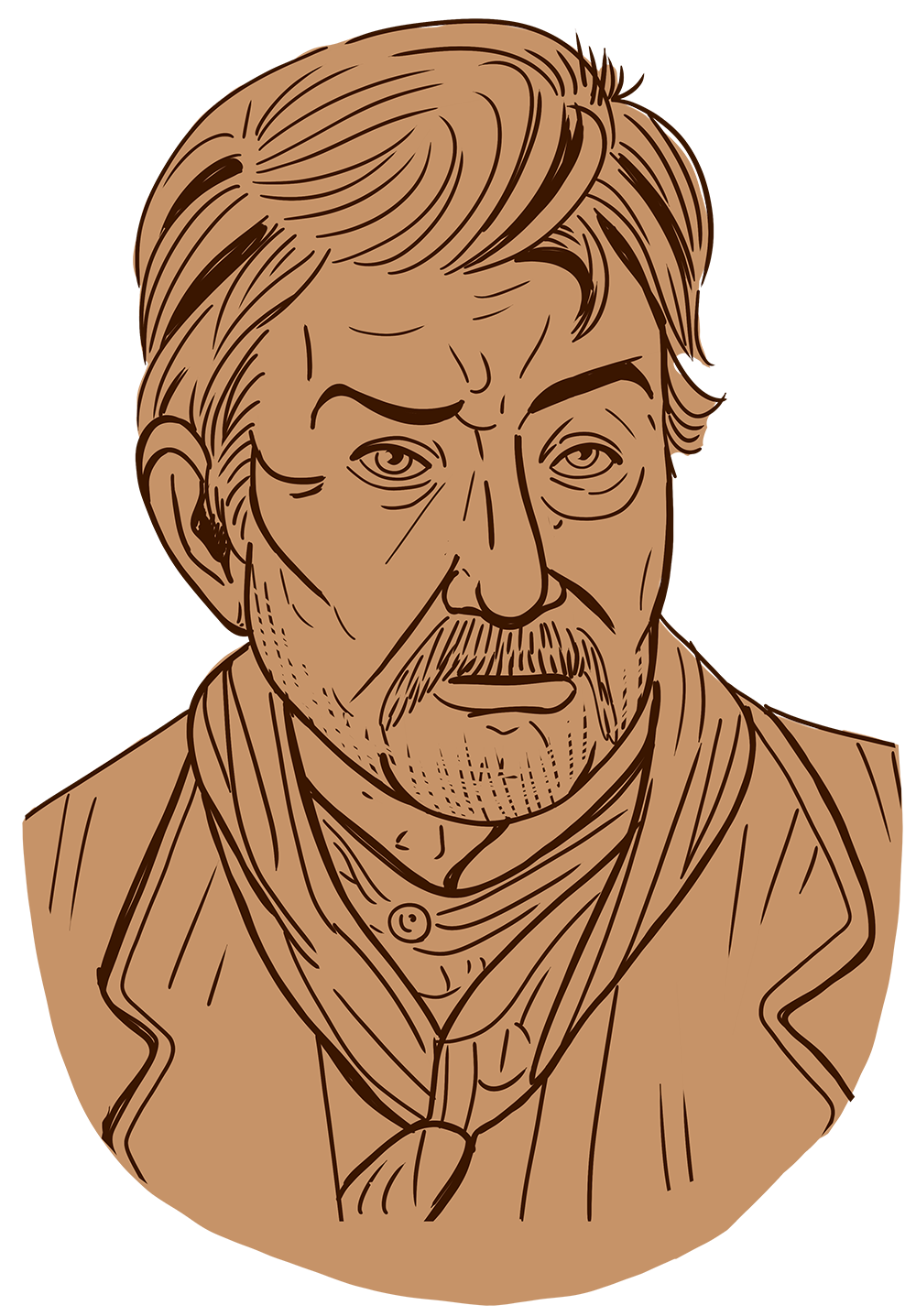
Who was
Jesse Chisholm?
(ca. 1805–1868)
Of Scottish and Cherokee descent, plainsman Jesse Chisholm is best remembered today by the Chisholm Trail, the famous route of cattle drives across Indian Territory (present Oklahoma) from Texas to Kansas. He was, however, far more historically significant as a frontier trader who first worked among the Plains Indians and served as a mediator in their dealings with the Cherokee Nation, the Republic of Texas, and the United States.
Chisholm first emerged into historical notice as a member of a gold-searching party that explored up the Arkansas River to the site of present Wichita, Kansas, in 1826. Four years later he helped blaze a trail from Fort Gibson to Fort Towson. In 1834 he took part in the Dodge-Leavenworth Expedition, which made the first official contact with the Comanche, Kiowa, and Wichita near the Wichita Mountains in southwestern Oklahoma.
In 1836 Chisholm married the fifteen-year-old Eliza Edwards, daughter of Creek trader James Edwards, who operated a trading post situated on the right bank of the Little River about three miles above its confluence with the North Canadian River. From there, Chisholm made trading ventures onto the prairie, becoming close friends with tribe leaders. He eventually moved west along the Canadian River and established a trading post near present Asher and later at Council Grove along the North Canadian River near present western Oklahoma City.
During the 1840s Chisholm assisted the Republic of Texas and the United States in bringing American Indian leaders to treaty councils in which he served as an intermediary and interpreter. After the signing of the 1846 Treaty of Comanche Peak Chisholm accompanied an Indian delegation to Washington, D.C., and he interpreted for Pres. James K. Polk. During the Civil War Chisholm established a ranch near present Wichita, Kansas. Following the war he was again instrumental in bringing Indian leaders to treaty councils in Kansas. He died on March 4, 1868, while trading with Americans Indians on Salt Creek. His grave is located northeast of Geary, Oklahoma.
How Did The Chisholm Trail Come About?
By the end of the Civil War in 1865, Union and Confederate forces had consumed most of the beef east of the Mississippi. Up until then, pork was the leading meat source in ordinary diets. Millions of people had developed a taste for beef. When available, a steer would go for as much as $50 a head back East.
During the Civil War, untended herds of longhorns multiplied by the millions. Texas ranchers became “cattle-poor.”
Thousands of cattle roamed the south Texas. Ranchers considered themselves lucky if they could get $3 a head. The shortage of beef in the East, together with an increasing taste for it, created a demand that promised great profits if the cattle-poor ranchers could get their herds to the eastern cattle markets.
With the end of the Civil War, cattlemen needed a new route to get their cattle to market.
Joseph McCoy, an enterprising promoter, was the first to see promise in a shorter, more direct route through Indian Territory. This idea included new railheads slowly moving west through Kansas. Working a deal with the Railroad, McCoy built cattle pens and a new hotel at the railhead in Abilene, Kansas. This was near the upper end of a trade route started by Indian scout, interpreter, and trader, Jesse Chisholm.
The trail crossed the Red River south of Duncan, Oklahoma, led north through Indian Territory to Wichita, Kansas , and on to the railway in Abilene. It is estimated more than 5 million Texas cattle were driven north to markets from 1867 to 1884, the majority over the Chisholm Trail.
Thus, the legendary Chisholm Trail was born, and the world began a love affair with the old west and the American Cowboy. That love affair continues today.
